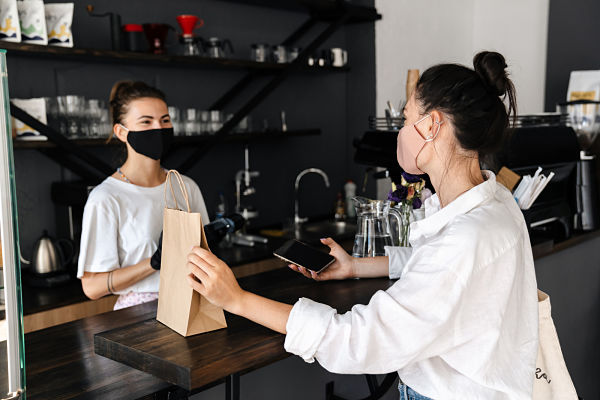
If you are a die-hard fan of the HBO Series, Game of Thrones, you would be familiar with the phrase ‘winter is coming.’ Winter is indeed coming. According to Hearst in their Chron.com article, 60% of restaurants experience a decline during the winter season (December, January and February). The depth of the impact that seasonality brings can vary; therefore, the key to surviving and thriving despite seasonal challenges is to prepare early. Preparation begins with developing your plan and incorporating innovative strategies.
To mitigate loss, quick service restaurants prepare for the possible consequences of bad winter weather, identify and solve staffing issues, among other things. However, quick service restaurants should prepare to mitigate against financial loss by adopting effective business models that reflect new trends. While it may be true that restaurateurs experience both bright and dark days during the off season, it is critical to acknowledge that the tides have changed. Staffing challenges are mounting and inflation is affecting the bottom line. The biggest shift is eating habits; ordering ready-to-eat food is a permanent fixture in the dining landscape.
The world’s eating experience has transformed
In the restaurant business, delivery is king; at least from the perspective of the consumer. Picture this. A chilly evening. Your repeat customer calls ahead to place their meal order. They take this order to go. Meanwhile, there is traffic in your restaurants; families, groups of friends, ordering extra items, like bottles of wine. Sounds like an old snapshot or perhaps a 90’s movie, right? Picture another scenario. A chilly evening. Your customer orders their meal through an app and it gets delivered to their house. Most people are ordering through apps so your restaurants aren’t brimming, but there are a few patrons about. Sounds more recent? In the second scenario, do you imagine your patrons ordering through your food delivery app? Are they also ordering extras they would have purchased had they been in your restaurant?
Even before the coronavirus pandemic, this change of food experience had been rolling in like a hurricane, visible and rapid. A 2018 Forbes article discusses the alarming rate at which millennials are ditching the traditional kitchen for meal preps or ordering in, indicating that restaurants were “hot on delivery.” The article states that “There could be a scenario where by 2030 most meals currently cooked at home are instead ordered online and delivered from either restaurants or central kitchens.”
Although this trend started before the pandemic, restaurant dining was still a thing. Since the pandemic, however, there has been a significant decline in restaurant dining and the number of people opting for ready-to-eat food delivery has grown exponentially. According to an article by McKinsey & Company, “The most mature delivery markets worldwide…are now four to seven times larger than they were in 2018.” People are receiving food at their doorsteps with a few simple taps on their phone, and surveys suggest a myriad of reasons for this lifestyle change including convenience, cost, laziness and mysophobia (fear of germs).
Whatever the reason, restaurateurs are shifting their business models to take advantage of this new way of experiencing food. Take Papa Johns for example. QSR Magazine recently published an article which delves into their ability to remain profitable for 12 consecutive quarters. The company resisted the temptation of aggressive national discounts despite inflation (rising commodity costs) and dwindling in-restaurant diners. Seventy-five percent of Papa Johns’ business today is e-commerce, although their commodity costs hiked 18 percent in Q2. Rob Lynch, the company’s CEO said, “Our customers are going on the apps, going on the web and …our localized offers are readily available to everyone going on those digital channels. So, we absolutely can compete for that value customer.”
Meal delivery is ideal for patrons and Papa Johns is capitalizing on that. Mr. Lynch indicated that “the chain’s value strategy is paramount as the back half of the year approaches, when potential spending shifts could compound what’s already a complicated supply dynamic.”
Is your quick service restaurant capitalizing on ready-to-eat food delivery opportunities, particularly during the cold months? A restaurant mobile app is an integral software tool that you can use to enter the game and remain in it. Customers find your company easily; they engage with your brand more and you will be well positioned to take advantage of repeat business.
While the shift to food delivery is seismic, many factors affect profitability in that space including commission fees, marketing costs, operating costs, and inflation. McKinsey & Company suggests that, “Restaurants that choose to continue serving both dine-in and delivery customers will need to adapt their pricing to cover delivery’s additional costs.” Attracting diners during the winter months to possibly offset those additional costs requires creative thinking and planning. Webstaurant Store suggests designing an exciting menu to entice patrons to dine in, and offering seasonal meal preps for people who want to cook but don’t want to start from scratch. Toast suggests loyalty programs, events such as trivia nights, and leveraging technology that drives throughput.
Whatever path you choose to carry your business through the constant fluctuations of restaurant seasonality, your plan should incorporate innovative strategies, including technology. Besides investing in a customer-facing mobile app, use technology to
- develop efficient and consistent processes
- track your operations and staff performance in real time across your restaurants
- maintain consistency and efficiency in food and service quality
- streamline your quality assessments
This precision and consistency will positively impact your bottom line. MeazureUp, a digital tool that automates, collects and analyzes your stores’ data with a view of corrective action and improvement, can help you achieve this precision. Learn how your business can thrive, despite the ebbs and flows of seasonal business, by using MeazureUp’s convenient, easy-to-use task management and brand standards software. Schedule a demo today.

